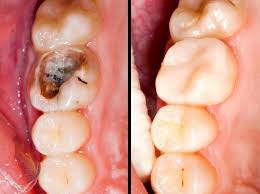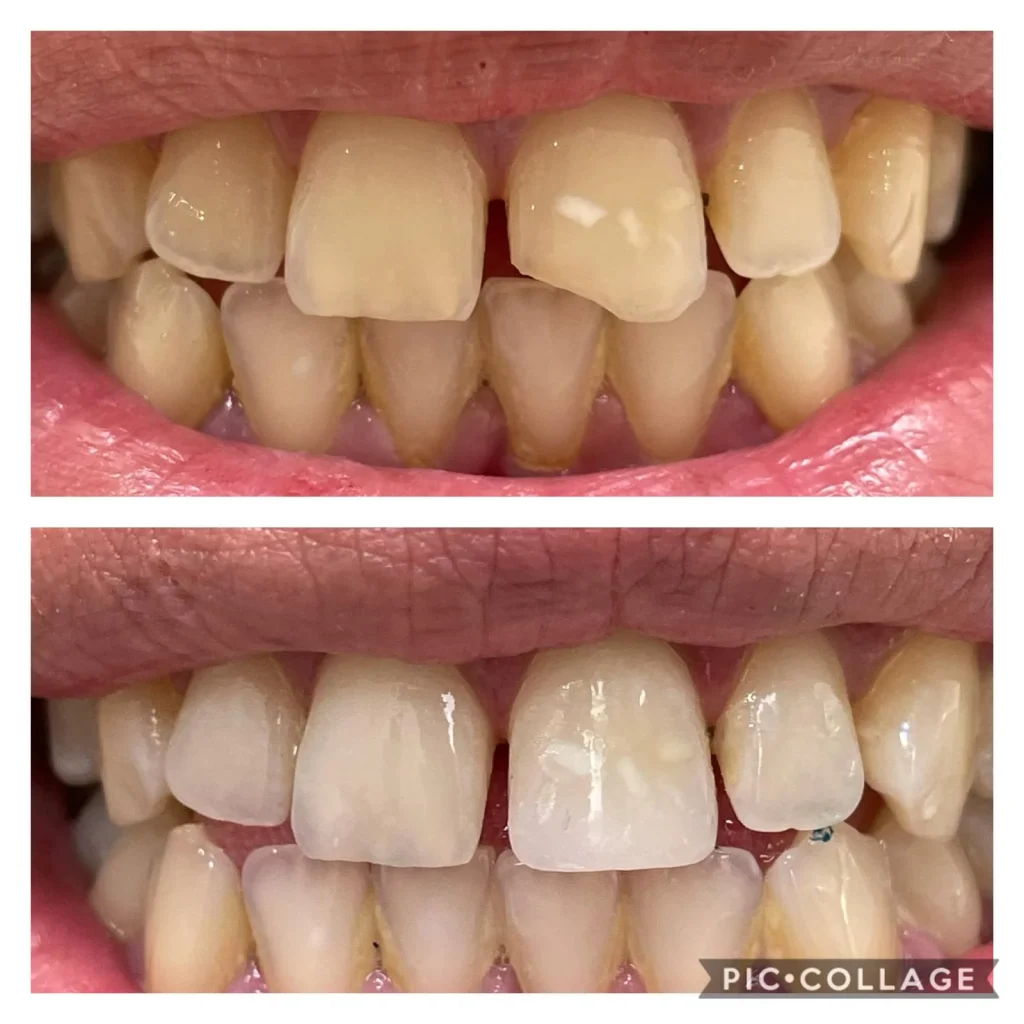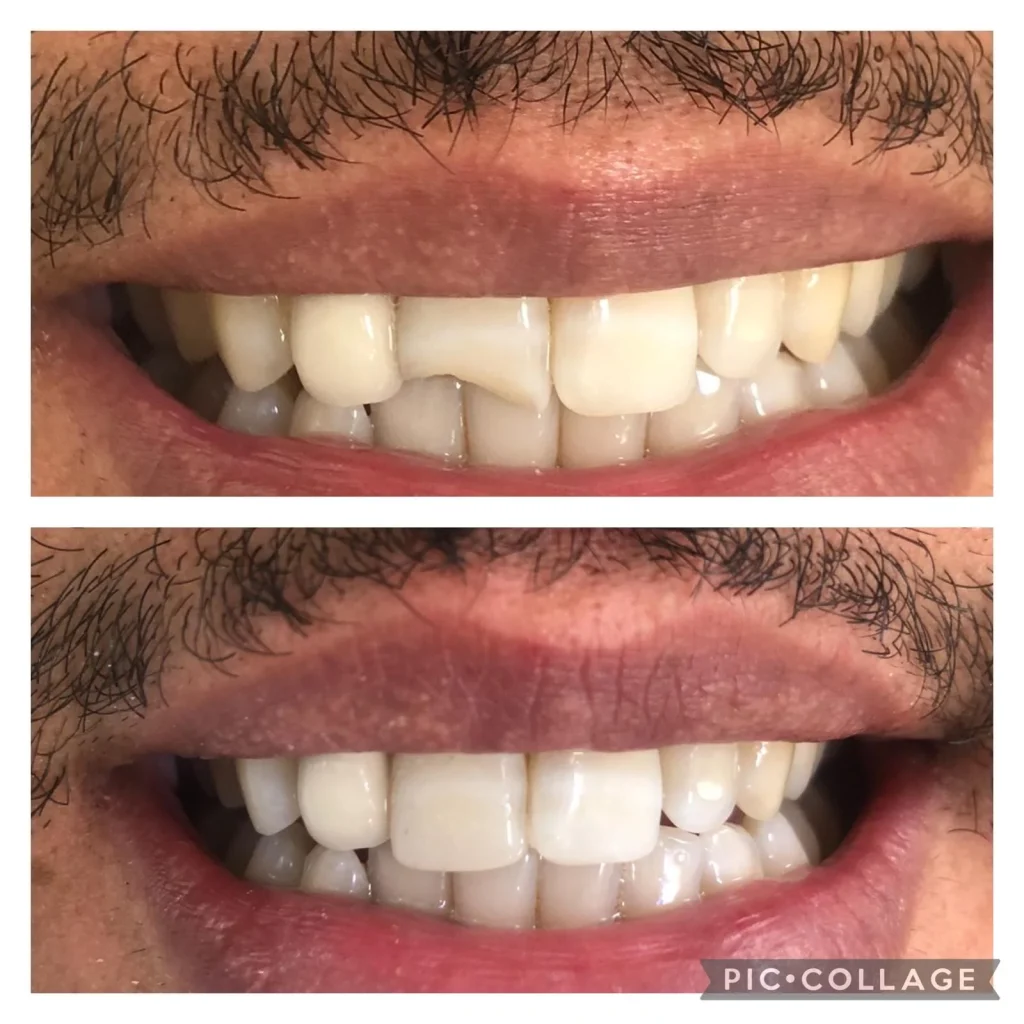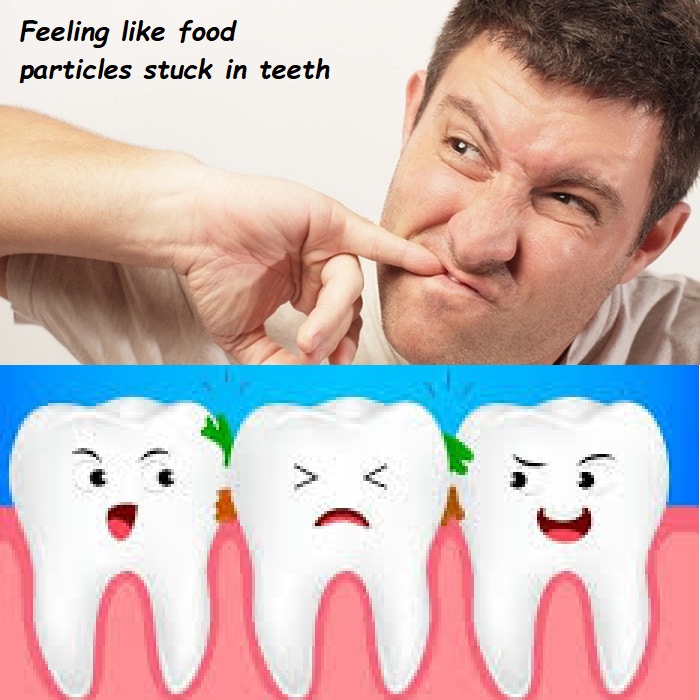how long after filling can i eat

Dental fillings are a common procedure used to treat cavities and restore the function and integrity of a tooth. One of the most frequently asked questions by patients after getting a dental filling is, “How long after filling can I eat?” This question is crucial because eating too soon or consuming the wrong types of food can affect the longevity of the filling and the overall health of your teeth. In this comprehensive guide, we will explore the different types of fillings, the time required before eating after a filling, tips for eating post-procedure, and other essential aspects to ensure your dental health.
Types of Dental Fillings
Before addressing how long after a filling can you eat, it’s important to understand the different types of dental fillings and how they might influence your eating habits post-procedure. The most common types of fillings include:
- Amalgam Fillings:
- Made from a mixture of metals, including silver, mercury, tin, and copper.
- Known for their durability and strength, making them suitable for molars and teeth that endure heavy chewing forces.
- These fillings require a longer time to set completely, which can influence the waiting period before eating.
- Composite Fillings:
- Made from a mixture of plastic and fine glass particles.
- They are tooth-colored and provide a more natural appearance.
- These fillings set quickly with the help of a curing light, allowing you to eat sooner compared to amalgam fillings.
- Ceramic Fillings:
- Made from porcelain and are known for their aesthetic appeal and strength.
- These fillings are more resistant to staining and wear but may require a longer setting time depending on the bonding material used.
- Gold Fillings:
- Made from a gold alloy, these fillings are durable and long-lasting.
- They require multiple visits to the dentist and a longer time to set, impacting the waiting period before you can eat.
How Long After Filling Can I Eat?
The answer to “How long after filling can I eat?” depends on several factors, including the type of filling, the location of the filling, and the advice of your dentist. Here’s a detailed breakdown based on the type of filling:
Amalgam Fillings
- Setting Time: Amalgam fillings take about 24 hours to set completely. However, you don’t need to wait a full day before eating.
- Eating Guidelines: It’s generally recommended to wait at least one hour before eating after getting an amalgam filling. However, you should avoid hard or chewy foods for the first 24 hours to allow the filling to set properly.
- Post-Filling Care: Be cautious while chewing to avoid putting undue pressure on the newly placed filling.
Composite Fillings
- Setting Time: Composite fillings harden immediately under a curing light, allowing you to eat shortly after the procedure.
- Eating Guidelines: You can usually eat as soon as the anesthesia wears off, which is typically within a couple of hours. However, it’s best to avoid very hard or sticky foods for the first 24 hours.
- Post-Filling Care: Since composite fillings set quickly, there’s less risk of damaging them by eating too soon. However, being cautious with your food choices is still advisable.
Ceramic Fillings
- Setting Time: Ceramic fillings may require a bit more time to set compared to composite fillings, but the exact duration can vary.
- Eating Guidelines: Your dentist will provide specific instructions, but you can generally eat within a few hours after the procedure once the anesthesia wears off.
- Post-Filling Care: Similar to composite fillings, avoid hard and sticky foods for the first 24 hours to ensure the filling sets properly.
Gold Fillings
- Setting Time: Gold fillings require multiple visits and take longer to set compared to other types of fillings.
- Eating Guidelines: After the final placement of the gold filling, you may need to wait several hours before eating, based on your dentist’s advice.
- Post-Filling Care: Avoid hard and chewy foods for at least 24 hours to allow the filling to settle properly.
Tips for Eating After a Dental Filling
Regardless of the type of filling, here are some general tips to ensure a smooth and comfortable eating experience post-procedure:
- Wait for the Anesthesia to Wear Off:
- It’s crucial to wait until the local anesthesia completely wears off before eating. Eating while still numb can cause you to bite your tongue, cheek, or lips, leading to injury.
- Start with Soft Foods:
- Begin with soft foods that require minimal chewing, such as yogurt, mashed potatoes, soup, or smoothies. This will help you avoid putting excessive pressure on the new filling.
- Avoid Hot and Cold Foods:
- Your tooth may be sensitive to extreme temperatures immediately after the filling. Opt for foods that are at room temperature to avoid discomfort.
- Chew on the Opposite Side:
- If possible, chew on the side of your mouth opposite the filling to prevent any undue pressure on the newly restored tooth.
- Avoid Sticky and Hard Foods:
- Foods like caramel, gum, nuts, and hard candies can dislodge or damage a new filling. Avoid these for at least 24 hours or as advised by your dentist.
- Maintain Good Oral Hygiene:
- Continue to brush and floss your teeth regularly, but be gentle around the area of the filling. Good oral hygiene will help prevent further decay and maintain the integrity of the filling.
Understanding Tooth Sensitivity After a Filling
It’s common to experience some tooth sensitivity after getting a dental filling. This sensitivity can be triggered by hot, cold, sweet, or acidic foods and drinks. Here’s why this happens and how you can manage it:
Causes of Tooth Sensitivity
- Inflammation:
- The process of removing decay and placing a filling can irritate the tooth’s nerve, leading to temporary inflammation and sensitivity.
- High Filling:
- If the filling is slightly higher than the surrounding teeth, it can cause pressure when you bite down, leading to sensitivity. Your dentist can adjust the filling if needed.
- Type of Filling Material:
- Some filling materials, such as amalgam, can conduct temperature changes more easily, leading to increased sensitivity.
Managing Tooth Sensitivity
- Desensitizing Toothpaste:
- Using a toothpaste designed for sensitive teeth can help reduce discomfort. These toothpastes contain ingredients that help block the sensation from reaching the nerve of the tooth.
- Avoid Trigger Foods:
- Try to avoid foods and drinks that trigger sensitivity, such as hot coffee, ice cream, and acidic beverages.
- Gentle Brushing:
- Use a soft-bristled toothbrush and gentle brushing techniques to avoid further irritating the sensitive tooth.
- Follow-Up with Your Dentist:
- If sensitivity persists beyond a few weeks or becomes severe, schedule a follow-up appointment with your dentist. They can assess the filling and make any necessary adjustments.
Long-Term Care for Your Fillings
Proper care and maintenance are essential to ensure the longevity of your dental fillings. Here are some long-term care tips:
- Regular Dental Check-Ups:
- Visit your dentist regularly for check-ups and cleanings. Your dentist can monitor the condition of your fillings and address any issues early on.
- Good Oral Hygiene:
- Brush your teeth at least twice a day and floss daily to remove plaque and food particles that can lead to decay around the filling.
- Healthy Diet:
- Maintain a balanced diet that is low in sugary and acidic foods. These can contribute to tooth decay and affect the integrity of your fillings.
- Avoid Harmful Habits:
- Refrain from habits that can damage your fillings, such as chewing on ice, biting your nails, or using your teeth to open packages.
- Use a Mouthguard:
- If you grind or clench your teeth at night, wearing a mouthguard can protect your fillings from excessive wear and tear.
Common Questions About Eating After a Filling
Can I Eat Right After a Filling?
For composite (tooth-colored) fillings, you can usually eat as soon as the anesthesia wears off. For amalgam (silver) fillings, it’s recommended to wait at least one hour before eating and avoid hard foods for the first 24 hours.
What Foods Should I Avoid After a Filling?
Avoid sticky, hard, and chewy foods immediately after getting a filling. These include foods like caramel, gum, nuts, and hard candies. Opt for softer foods that require minimal chewing.
How Can I Prevent My Fillings from Falling Out?
Maintaining good oral hygiene, avoiding hard and sticky foods, and visiting your dentist regularly can help prevent your fillings from falling out. If you experience any issues with your fillings, contact your dentist promptly.
Is It Normal for My Tooth to Hurt After a Filling?
Some sensitivity or discomfort is normal after a filling, but severe or persistent pain is not. If you experience significant pain, contact your dentist for an evaluation.
Conclusion
Understanding how long after filling can you eat and following the appropriate guidelines is essential for ensuring the success and longevity of your dental fillings. The type of filling material, the specific instructions from your dentist, and your oral hygiene practices all play a crucial role in determining when and what you can eat after a filling. By taking the necessary precautions and maintaining good oral care habits, you can enjoy the benefits of your dental fillings and maintain a healthy, beautiful smile.
In summary, the answer to “how long after filling can I eat?” varies depending on the type of filling and individual circumstances. Always follow your dentist’s advice and take care of your teeth to ensure the best possible outcome for your dental health.
How Long Does a Tooth Filling Take to Set?
The setting time of a tooth filling depends on the type of material used. Here’s a detailed look at the setting times for different types of fillings:
Amalgam Fillings
- Setting Time: Amalgam fillings, made from a mixture of metals including silver, mercury, tin, and copper, take approximately 24 hours to set completely.
- Functionality: While amalgam fillings are durable and long-lasting, they require more time to harden. Patients are typically advised to avoid chewing on the filled tooth for at least 24 hours to allow the filling to fully set.
Composite Fillings
- Setting Time: Composite (tooth-colored) fillings set almost immediately when a curing light is used. This light-activated process hardens the composite material within a few seconds.
- Functionality: Since composite fillings harden quickly, patients can use the filled tooth almost immediately after the procedure, once the anesthesia wears off.
Ceramic Fillings
- Setting Time: Ceramic fillings, often made of porcelain, require bonding agents that may take a few hours to set completely.
- Functionality: Your dentist will provide specific guidelines, but you can typically eat a few hours after the procedure, being cautious with hard foods for the first 24 hours.
Gold Fillings
- Setting Time: Gold fillings require multiple visits and longer setting times compared to other fillings. The final placement involves cementing the gold inlay or onlay, which may take several hours to fully set.
- Functionality: After the final placement, it’s advisable to wait several hours before eating, following your dentist’s specific recommendations.
How Long After a Filling Can You Drink Water?
Drinking water after a filling generally depends on the type of filling and whether the anesthesia has worn off:
Immediately After the Procedure
- Composite Fillings: You can drink water almost immediately after the procedure once the anesthesia has worn off, typically within a couple of hours.
- Amalgam Fillings: While you can drink water soon after the procedure, it’s best to wait until the numbness from the anesthesia wears off to avoid accidentally biting your tongue or cheek.
Temperature Sensitivity
- After getting a filling, your tooth may be sensitive to temperature changes. It’s advisable to drink water at room temperature to avoid discomfort from hot or cold water.
Do’s and Don’ts After a Tooth Filling
Following the right post-filling care guidelines is crucial for the longevity and effectiveness of the filling. Here are some do’s and don’ts after getting a tooth filling:
Do’s
- Wait for the Anesthesia to Wear Off: Avoid eating or drinking anything until the numbness from the anesthesia wears off to prevent accidental bites or burns.
- Maintain Oral Hygiene: Brush and floss your teeth gently, being careful around the filled tooth.
- Eat Soft Foods: Start with soft foods like yogurt, mashed potatoes, and soups to avoid putting pressure on the new filling.
- Monitor Sensitivity: It’s normal to experience some sensitivity. Use desensitizing toothpaste if necessary and avoid extremely hot or cold foods and drinks.
- Follow Up: Schedule a follow-up appointment if you experience prolonged sensitivity, pain, or any issues with the filling.
Don’ts
- Avoid Hard and Sticky Foods: Stay away from foods like nuts, hard candies, and chewing gum for at least 24 hours after the filling to prevent dislodging or damaging the filling.
- Don’t Chew on the Filled Side: If possible, chew on the opposite side of your mouth from where the filling was placed, especially if it’s an amalgam filling that takes longer to set.
- Avoid Alcohol and Tobacco: Refrain from consuming alcohol or using tobacco products as they can affect the healing process and the integrity of the filling.
What is the Recovery Time for a Filling?
The recovery time after a dental filling is typically short, but it varies depending on the type of filling and individual patient factors:
Immediate Recovery
- Composite Fillings: Since these set quickly with a curing light, patients can resume normal activities almost immediately, barring the time needed for the anesthesia to wear off.
- Amalgam Fillings: These require a longer setting period, and it’s advised to avoid heavy chewing on the filled tooth for at least 24 hours.
Sensitivity Period
- It’s common to experience some sensitivity to temperature, pressure, or sweet foods for a few days to a couple of weeks after the filling. Using desensitizing toothpaste can help manage this.
Long-Term Recovery
- The tooth may take a few days to fully adjust to the new filling. If sensitivity or discomfort persists beyond a few weeks, it’s important to contact your dentist to ensure there are no complications.
Can I Brush My Teeth After a Filling?
Yes, you can and should brush your teeth after a filling, but there are some important considerations:
Immediate Brushing
- Gentle Brushing: Use a soft-bristled toothbrush and be gentle around the area of the filling to avoid irritation or dislodging the filling.
- Avoid Aggressive Flossing: Be cautious when flossing around the filled tooth, especially if it’s a composite filling, to prevent dislodging it. Use a gentle, up-and-down motion rather than a sawing motion.
Long-Term Oral Hygiene
- Regular Brushing and Flossing: Continue to brush twice a day and floss daily to maintain good oral hygiene and prevent further decay.
- Desensitizing Toothpaste: If you experience sensitivity, consider using a toothpaste designed for sensitive teeth.
Check-Ups
- Regular dental check-ups and cleanings are essential to monitor the condition of your fillings and overall dental health.
Conclusion
Understanding the nuances of post-filling care, including how long it takes for a filling to set, when you can drink water, and best practices for oral hygiene, is crucial for the longevity and effectiveness of your dental fillings. Following your dentist’s specific advice and maintaining good oral hygiene habits will ensure a smooth recovery and protect your dental health in the long term.
Do Fillings Hurt the Next Day?
Experiencing some discomfort or sensitivity the day after getting a filling is relatively common. This can be due to a few reasons:
Causes of Pain and Discomfort
- Nerve Irritation: The process of drilling and filling can irritate the tooth’s nerve, causing temporary inflammation and sensitivity.
- High Filling: If the filling is slightly higher than the surrounding teeth, it can cause discomfort when you bite down. This can often be adjusted by your dentist.
- Jaw Soreness: Keeping your mouth open during the procedure can cause temporary jaw soreness.
- Tooth Sensitivity: Teeth may be sensitive to temperature changes, pressure, or sweet foods after a filling.
Managing Pain and Discomfort
- Over-the-Counter Pain Relief: Taking pain relievers such as ibuprofen or acetaminophen can help manage discomfort.
- Avoid Trigger Foods: Stay away from very hot, cold, or sugary foods and drinks.
- Soft Foods: Stick to soft foods that don’t require much chewing.
- Desensitizing Toothpaste: Using toothpaste designed for sensitive teeth can help alleviate sensitivity.
When to Contact Your Dentist
- Persistent Pain: If pain persists beyond a few days or is severe, contact your dentist. It could indicate an issue with the filling or the need for further adjustment.
- High Filling: If you feel the filling is too high and it’s affecting your bite, your dentist can adjust it to relieve the discomfort.
How Fast Do Fillings Harden?
The hardening time of dental fillings varies depending on the type of material used:
Amalgam Fillings
- Setting Time: Amalgam (silver) fillings take about 24 hours to fully harden. They gradually set and strengthen over this period.
- Implications: You should avoid chewing on the filled tooth for the first 24 hours to prevent dislodging or damaging the filling.
Composite Fillings
- Setting Time: Composite (tooth-colored) fillings harden almost immediately when exposed to a curing light. The curing process typically takes a few seconds to a minute.
- Implications: You can eat and resume normal activities shortly after the procedure, once the anesthesia wears off.
Ceramic and Gold Fillings
- Setting Time: Ceramic fillings may take a few hours to set completely, depending on the bonding material used. Gold fillings require multiple visits and take longer to set due to the cementing process.
- Implications: Follow your dentist’s specific guidelines for these types of fillings to ensure proper setting.
What Are the Disadvantages of Tooth Fillings?
While tooth fillings are effective for restoring the function and integrity of a tooth, they do have some disadvantages:
Amalgam Fillings
- Aesthetics: Amalgam fillings are silver in color and can be noticeable, making them less desirable for front teeth.
- Mercury Content: They contain mercury, which raises health concerns for some patients, although the ADA states that amalgam fillings are safe.
- Setting Time: They take longer to set and require caution with eating and chewing for 24 hours.
Composite Fillings
- Durability: Composite fillings are less durable than amalgam and may need to be replaced more frequently, especially in areas with heavy chewing forces.
- Cost: They are generally more expensive than amalgam fillings.
- Technique Sensitivity: The bonding process requires a dry, clean environment, making it technique-sensitive.
Ceramic and Gold Fillings
- Cost: Ceramic and gold fillings are more expensive than other types.
- Multiple Visits: Gold fillings require multiple dental visits.
- Wear on Opposing Teeth: Ceramic fillings can be abrasive and cause wear on opposing teeth.
What Happens if You Eat When Your Mouth Is Numb?
Eating while your mouth is still numb from anesthesia can lead to several potential issues:
Risk of Injury
- Biting Tongue, Cheek, or Lips: Numbness can prevent you from feeling pain, leading to accidental bites that can cause significant injury.
- Burns: You might not feel temperature changes, leading to burns from hot foods or drinks.
Chewing Difficulties
- Ineffective Chewing: Numbness can make it difficult to chew properly, leading to improper digestion and potential choking hazards.
Can I Eat Chips After a Filling?
Whether you can eat chips after a filling depends on the type of filling and the time elapsed since the procedure:
Composite Fillings
- After Anesthesia Wears Off: You can eat chips once the numbness has worn off, typically within a few hours. However, it’s advisable to avoid hard and crunchy foods like chips for the first 24 hours to prevent stressing the new filling.
Amalgam Fillings
- Wait 24 Hours: Avoid eating chips for at least 24 hours after getting an amalgam filling to allow it to set completely and avoid damaging or dislodging the filling.
Can I Run After a Filling?
Yes, you can typically resume running and other physical activities after getting a dental filling. However, there are a few considerations:
Immediate Post-Procedure Period
- Anesthesia Effects: Wait until the effects of the local anesthesia wear off before engaging in physical activities. Running or strenuous exercise while numb can lead to accidental injuries, such as biting your tongue or cheek.
Potential Discomfort
- Jaw Soreness: If you experience jaw soreness from keeping your mouth open during the procedure, you might want to wait until the soreness subsides before engaging in vigorous activities.
Overall Recovery
- Listen to Your Body: If you feel any discomfort or sensitivity while running, consider taking it easy for a day or two.
In summary, while running after a filling is generally safe, it’s best to wait until the anesthesia has worn off and to be mindful of any discomfort that might affect your performance or safety.
Conclusion
Dental fillings are a common and effective treatment for tooth decay, but understanding the nuances of post-filling care is crucial for a smooth recovery. By knowing how long fillings take to set, what foods and activities to avoid, and how to manage any discomfort, you can ensure that your fillings last and that you maintain good oral health. Always follow your dentist’s specific advice and don’t hesitate to contact them if you experience any issues or have further questions.









